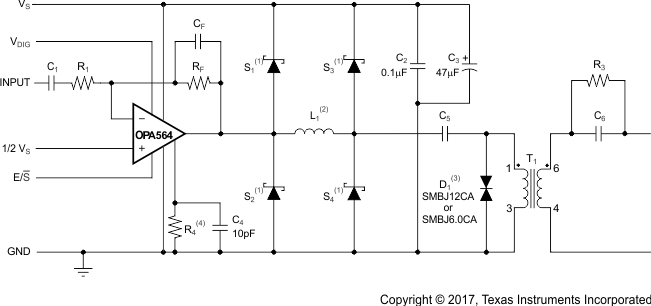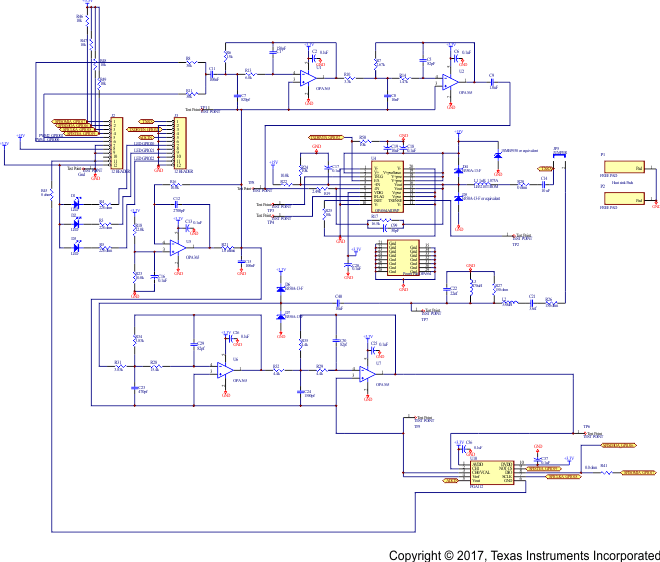SBOS567A June 2011 – February 2024 OPA564-Q1
PRODUCTION DATA
- 1
- 1 Features
- 2 Applications
- 3 Description
- 4 Device Comparison Table
- 5 Pin Configuration and Functions
- 6 Specifications
- 7 Detailed Description
- 8 Application and Implementation
- 9 Device and Documentation Support
- 10Revision History
- 11Mechanical, Packaging, and Orderable Information
Package Options
Refer to the PDF data sheet for device specific package drawings
Mechanical Data (Package|Pins)
- DWP|20
Thermal pad, mechanical data (Package|Pins)
- DWP|20
Orderable Information
8.2.3 Powerline Communication
Powerline-communication (PLC) applications require some form of signal transmission over an existing ac power line. A common technique used to couple these modulated signals to the line is through a signal transformer. A power amplifier is often needed to provide adequate levels of current and voltage to drive the varying loads that exist on modern powerlines. Figure 8-8 shows one such application. The OPA564-Q1 is used to drive signals used in frequency modulation schemes such as frequency-shift keying (FSK) or orthogonal frequency-division multiplexing (OFDM) to transmit digital information over the powerline. The power output capabilities of the OPA564-Q1 are needed to drive the current requirements of the transformer that is shown in the figure, coupled to the ac power line via a coupling capacitor. Circuit protection is often required to prevent excessive line voltages or current surges from damaging the active circuitry in the power amplifier and application circuitry.

Figure 8-9 illustrates a detailed powerline communication circuit.
 Figure 8-9 Detailed Powerline
Communication Circuit
Figure 8-9 Detailed Powerline
Communication Circuit